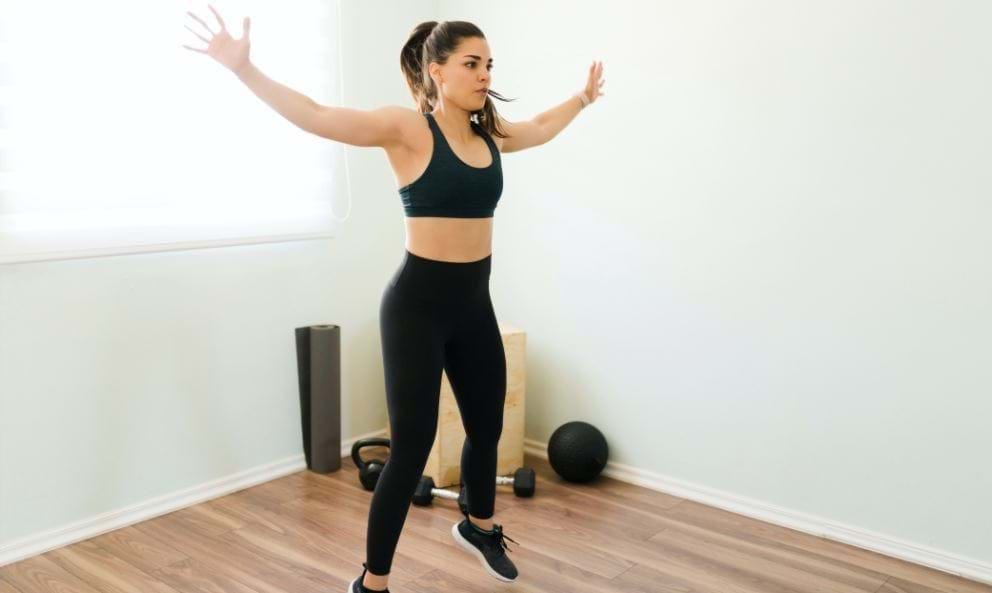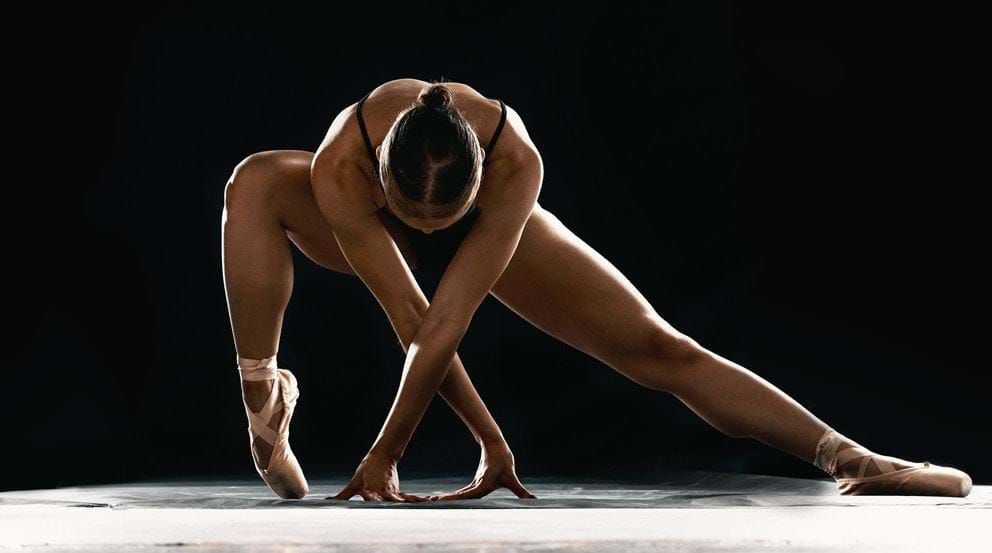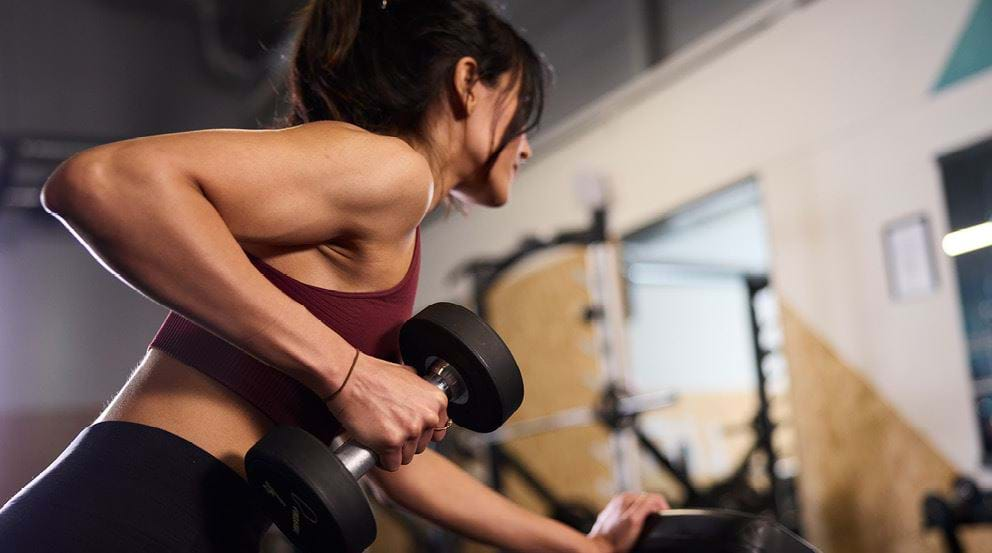Calisthenics Exercises and Workouts For Beginners

Page last updated: 30th January 2023
What Is Calisthenics | Benefits | Calisthenics Workout Plan - Beginners | Advanced
What is a calisthenics workout?
Calisthenics is a form of resistance training that uses your body weight and gravity to provide the resistance to your muscle contractions, rather than using external weight like dumbbells.
Calisthenics dates back as far as Ancient Greece, and almost all movements in modern day weight training originates from these bodyweight exercises; for example, the leg press is an evolution of the bodyweight squat. Many free weight exercises are just calisthenics with barbells, dumbbells, or cables!
PureGym Warrington Central based Personal Trainer Phil Burrows is a big fan of calisthenics as a way to improve your strength, flexibility, energy levels, and state of mind. When Phil first started his fitness journey, he was 21 stone and unable to perform a single press up. Now, he is a gymnastic and teaches calisthenics to his clients, alongside other resistance training programmes.
Here, he looks at what calisthenics is, what the benefits are, a beginner calisthenics workout plan, and tips for creating more of a challenge for your calisthenics training plan.
What are the benefits of calisthenics exercises?
The biggest reason that calisthenics or bodyweight exercises have been overlooked in favour of weight training is that, in order to grow your muscle strength and size, you need to continually increase the resistance put on your muscles each week; adding weights is an easy way to do this.
While progressing with calisthenics isn't as straight forward as weightlifting, there are endless options for progression. And, the practice comes with some incredible benefits that make it worth adding into your weekly routine.
Greater mind-body connection
For most, the purpose of weightlifting is to grow both the strength and size of your muscles, and as a result the focus is on increasing the weight as quickly as possible. This can result in poor form and technique, which prevents progression and can result in injury.
With calisthenics, everything comes down to your form and technique. Really focusing on getting the movement pattern right, stimulating the right muscles, and having control over your body improves your mind-body connection and removes the emphasis on what your body looks like, to what it can do.
Training is more interesting
Calisthenics uses bodyweight and gravity to provide resistance and improve your strength, balance, and flexibility. It can be as basic or as advanced as needed to help you progress -- unlike with weight training where the only progress is in the load or number of reps, calisthenics progresses through the movement itself -- either making it more advanced, altering the speed, or changing the angle.
While basic bodyweight exercises like the squat are calisthenic exercises, advanced movements like those you see in gymnastics are also a form of calisthenics. This ability to adapt and evolve movements means every training session is interesting. It's also easier to break through plateaus when you can adapt the movement!
It can be done anywhere
In its most basic form, calisthenics only requires some floor space and your body, so it can be carried out anywhere, making it an extremely accessible form of movement! If you do prefer to work out in the gym, you won't have to wait for any equipment to do your routine, and if you prefer circuit-style training, you won't need to rely on several pieces of equipment being ready at one time.
Improves strength, flexibility, balance, and coordination
Calisthenics is a form of functional training that offers many physical benefits outside of muscle strength. Because the focus is on your form and how your body moves, it's great for improving strength, flexibility, balance, and coordination.
It's low impact
Weightlifting is great for building strength and general fitness, but the mix of heavy weights and incorrect form can cause injuries or issues with your joints, tendons, and muscles. Calisthenics is a low impact way to build strength, and as you are paying such close attention to your body during the movement, there's a reduced risk of injury.
It's a full body workout
Calisthenics works the whole body by balancing push and pull exercises, without focusing on one muscle group over another. This means you get a total body workout, including those smaller stabilising muscles that can be neglected in weight training. Even the muscles in your feet and hands are put to use!
Calisthenics workout plan for beginners
If you're new to starting calisthenics, it is best to begin with a basic calisthenics workout and go from there. Make sure you are really focusing on utilising the right muscles for each movement, and that you are getting the form right.
For all the moves in our beginners' calisthenics workout plan below, aim to do between 6 and 12 reps for three sets. When you get to 3 sets of 12, you can progress the movement -- we look at how to progress some movements in calisthenics after this workout.
- Stand with your feet slightly wider than hip width apart, feet facing out.
- Engage your core and stand tall, with your shoulders back and down. This will help to keep your spine straight.
- Lower yourself into a squat position by hinging at the hips and bending your knees, as if you were sitting down.
- The bottom position of a squat can vary depending on your mobility and strength. Aim to get your hips below parallel to your knees at a minimum, but if you can go further while keeping your spine straight and feet flat on the floor then do.
- Pause at the bottom of the movement before driving yourself back up through your legs.
Kneeling push up
- Start by lying down flat on the floor with your hands by your chest and elbows above your hands, pointing towards the ceiling.
- Keeping your knees on the floor, push into the ground to lift your torso up. Your spine and hips should form a straight line down to your knees.
- Slowly lower your chest towards the ground. Keep your elbows tucked into your sides.
Check out how to do different push up variations here.
Body row
The body row, also known as an inverted row, is a great pull exercise that uses gravity to provide resistance to the muscles in your back, arms, core, and hands (grip). To perform this movement, you need either a horizontal bar or suspended training equipment such as TRX.
- Set the bar or TRX handles so it sits around waist height.
- Lie down on the floor with your chest below the bar, facing upwards.
- Grab the bar using an overhand grip, hands slightly wider than shoulder-width apart.
- Engage your core to keep your body in one straight line, with only your heels on the floor.
- Pull your chest up towards the bar, keeping your elbows tucked into your side.
- Once you reach the top, pause before lowering back to starting position.
The higher the bar, the easier the movement, and vice vera, so feel free to adjust the height if you find this too easy or difficult.
Sit ups
Sit ups are an excellent move for developing core strength. It's important to really focus on engaging your abs throughout the movement, as it will help to prevent overcompensation from other muscles such as the neck.
- Start by lying flat on your back, knees bent and feet flat on the ground. You can tuck them underneath a bench for added stability.
- Cross your arms over your chest so your hands rest on the opposite shoulder.
- Engage your core. You can do this by squeezing your stomach towards your lower back.
- Curl your back off the ground by contracting your ab muscles until you are sat upright.
- Slowly lower yourself to the floor.
Burpees
Burpees are a hard but valuable exercise. Not only is it classed as cardio, but it is pretty much a full body strength movement.
- Stand up straight with your feet around shoulder-width apart.
- Squat down before placing your hands on the floor between your feet.
- Lean your weight forward onto your hands and kick back both feet together into a push up position.
- Do a push up and then pull your feet back towards the outside of your hands in a single movement. You can make this more challenging by lowering your body to the floor completely before pressing up.
- Push yourself up through to a standing position with your arms above your head, jumping as you reach the top.
The burpee is hard to get right. Keep the movement slow and controlled until you grasp it, and then work on the speed.
How to progress with calisthenics
With weight lifting, progression occurs when you add either reps or weights to create more demand on the muscles. Most people can progress easily at first, before eventually reaching a plateau. Breaking through these plateaus is difficult and even then, progress is slow the heavier the weights become.
Calisthenics exercises use bodyweight (which is what makes them so great for beginners) so there isn’t an option to build strength by changing the weights, and it’s unrealistic to add unlimited reps! To progress with calisthenics, you have to change the movement and progress the technique to make it more challenging. This could be the range of motion, how slow the movement is performed, using vertical surfaces like poles, unilateral movements, introducing pauses/ holds… It’s endless!
We’ll show a few examples to highlight how one movement in your calisthenics training plan can be adapted as you become stronger.
How to progress a bodyweight squat
- For total beginners, sitting and standing from a chair is a great place to start as it helps you to learn which muscles you should engage, where your back should be, etc.
- Once this is mastered, you can move to a lower level such as a step.
- Once you are able to sit and stand from the lower level without hands, and with perfect form, for 12 reps, you can repeat the movement without a step, making sure you get the same depth in this squat.
- When the squat is perfected, you can move onto a narrow squat, and a wide stance squat.
- Next step would be a pistol squat using support (such as TRX ropes or holding onto a chair).
- Then, it would be a pistol squat without any support.
- You can also change the speed, add in pauses, add in squat jumps, etc, to add further resistance.
How to progress a bodyweight push up
- Start with a wall push up.
- Move to an incline push up. The height and incline can be adjusted to enable further progression
- You can then move onto a kneeling push up.
- Once this is perfected, you can standard push ups.
- Further progressions include decline push ups, one handed push ups, clapping push ups.
Calisthenics can be carried out alongside your usual weight training workouts (although make sure you reduce the number of weightlifting sessions you do that week to allow your body to rest and recover) or you can replace weightlifting with a calisthenics-only training programme if you find you enjoy calisthenics more. It's also a great option for keeping fit while on holiday or travelling.
We've shared more bodyweight exercises here, or get an intermediate level calisthenics workout here. You can also find calisthenics exercises for biceps here.


